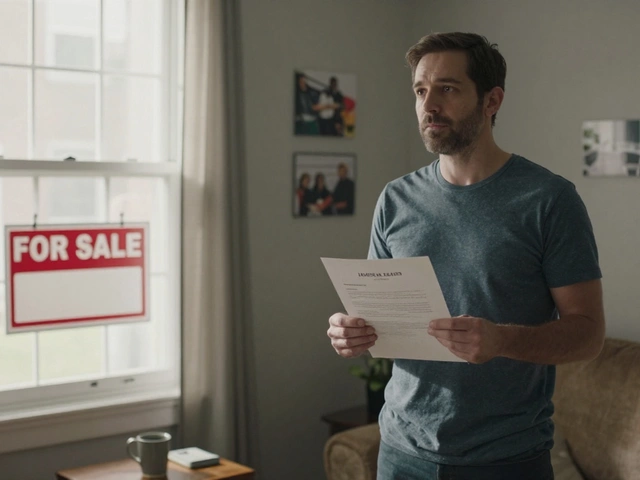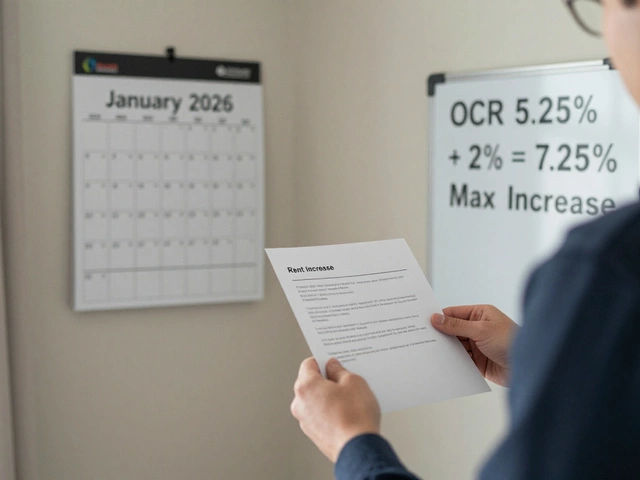Understanding Good ROI on Rental Property

Knowing the return on investment, or ROI, is crucial when you're diving into the world of rental properties. It’s like the scorecard that tells you if your investment is on the right track or veering into disaster territory. But what's a ‘good’ ROI? Sure, everyone would love to double their money overnight, but let's keep it a bit more realistic.
In the rental property game, a good ROI generally hovers around 8-12%. It’s a sweet spot where your property doesn’t just trickle in spare change but puts you in a position where your bank balance thanks you. If you're eyeing commercial properties, these properties often offer higher returns compared to residential ones, but they come with added complexities. So, what's the secret sauce to hitting these numbers? Well, it's not just about location, location, location, though that helps!
- What is ROI in Rental Property?
- Benchmarks for Good ROI
- Factors Affecting ROI
- Calculation Methods
- Tips for Improving ROI
- Market Trends Impact
What is ROI in Rental Property?
The rental property ROI is the magic formula that spells out how much return you're getting from your investment relative to its cost. It's the way investors gauge whether their purchase is paying off, or if it's just an expensive hobby. In simple terms, it's a measure of the profitability of your rental property.
So, how do we get this number? It’s all about the math. To calculate ROI, you take your annual return—or the profit from renting out the property—and divide it by the total investment cost. Here's a quick rundown:
- Determine your annual rental income. Let's say that's $30,000.
- Subtract your rental expenses (like repairs, property taxes, insurance), suppose these are $10,000 annually.
- Divide your net income ($20,000) by your total investment cost. If you bought the property for $200,000, your ROI gets you a neat 10%.
Getting to double digits is usually the goal, but it can vary. Residential properties might settle around 8-10%, while commercial ones can push higher, especially if you're willing to take on more risk.
Why ROI Matters
Understanding and tracking your ROI is crucial. It helps you make informed decisions about when to sell or when to hold tight. Additionally, it can guide you in managing expenses to bump up your returns. If you’re shelling out too much on maintenance, you might need to reconsider your management strategy.
Here's a little nugget to keep in mind: while a high ROI sounds appealing, it shouldn’t be the only factor driving your decision. Markets fluctuate, and property values aren't always stable. Keep a balanced perspective.
For those hungry for stats, a survey from 2023 showed that properties in urban areas averaged a 9-11% ROI, while rural rentals were slightly lower, around 7-9%. This doesn’t set rules, but it gives a helpful baseline.
Benchmarks for Good ROI
When you're trying to gauge what's a good ROI on a rental property, we need to talk numbers that make sense in the real world. While personal goals differ, there are some industry standards to consider.
Typically, a commercial property brings in more than its residential siblings. A reasonable range for a good ROI sits somewhere between 8 and 12%. Anything below 8% might make you feel like you’re treading water rather than swimming freely. This range is like the comfort zone where the risk doesn't outweigh the rewards.
Understanding ROI Percentages
The 8-12% range is not just a thumb rule—it reflects the balance between stability and profit. When you're getting more than 12%, it could be a sign of a high-risk opportunity that might not be sustainable. Conversely, lower than 8% could mean missed potential or unforeseen expenses eating into your profits.
Factors Contributing to Benchmarks
Location plays a significant role in these benchmarks. Properties in urban centers often have higher ROI because of demand, while suburban properties might fall on the lower side.
Consider the type of investment returns you desire. For a steady income without much headache, targeting that sweet spot of 8-12% is ideal. However, if you're one for high stakes, exploring opportunities with higher potential ROI might be worth it, albeit with more risk.
Example Data
To get a clearer idea, let's look at some known data:
| Property Type | Average ROI (%) |
|---|---|
| Urban Commercial Space | 10-15% |
| Suburban Retail Unit | 6-10% |
| Industrial Lease | 7-12% |
These figures are not set in stone but give a good reference to start from.
Factors Affecting ROI
When it comes to rental property ROI, numerous factors can tilt your returns towards profits or losses. It's not a one-size-fits-all scenario; various elements come into play, shaping the outcome of your investment.
1. Location
The cliché of real estate rings true: location, location, location. A property in a flourishing area with robust demand often boosts investment returns. Proximity to amenities, good schools, and public transportation ups the appeal, which can, in turn, lead to higher rents and occupancy rates.
2. Property Condition and Maintenance
A property that's rundown will drag down your ROI faster than you can say 'renovation.' Keeping the property in good shape is a no-brainer. Regular maintenance might pinch your budget in the short term but is essential for maximizing long-term returns.
3. Market Trends
Keeping an eye on the market trends is a smart move. Economic shifts, changes in interest rates, and housing demand can significantly impact your ROI. Being aware of these trends helps you make informed decisions about when to buy or sell.
4. Property Management
If you're not in the game for a hands-on experience, hiring a good property management company could be a lifesaver. A competent manager ensures your property stays rented, maintenance requests are handled swiftly, and that you aren't losing sleep over late-night tenant calls.
5. Financing Terms
The terms of financing your property hugely influence ROI. Lower interest rates and favorable loan terms mean less of your profits go into paying off debt. Shopping around for the best mortgage deal is just as crucial as picking a property.
6. Local Taxes and Regulations
Local property taxes and regulations can snatch a noticeable chunk of your rental earnings. Understanding local tax laws and any new legislations on the horizon keeps you prepared and helps avoid surprise hits to your ROI.
As you delve into the commercial property sale arena, assessing these factors can make or break your investment success. Don’t just rely on luck—arm yourself with knowledge and a strategic approach.

Calculation Methods
Figuring out the right way to calculate ROI for your rental property is kind of like learning a new recipe. There are ingredients you can't skip, and you’ve got to get them in the right order. Thankfully, it's not as complex as rocket science.
The Basic ROI Formula
Let's start with the basic formula that can give you a decent snapshot of your investment health. It's straightforward and boils down to:
ROI = (Net Profit / Total Investment) x 100
Here's how you break it down:
- Net Profit: This is your total income from the rental property minus all expenses. Think repairs, taxes, property management fees, and even that new dishwasher you had to buy last summer.
- Total Investment: This covers the purchase price, closing costs, and any renovations you had to do to make the property livable.
Cash-on-Cash Return
Cash-on-cash return is a popular metric, especially for folks dealing with mortgages. It’s all about seeing how your cash investment is performing.
Cash-on-Cash Return = Annual Pre-Tax Cash Flow / Total Cash Invested
This calculation checks how much profit you make each year from the cash you initially put down after financing the property.
Cap Rate
Want to know how a property stacks up against the competition? The capitalization rate, or cap rate, gives you a quick way to measure it.
Cap Rate = Net Operating Income (NOI) / Current Market Value
Typically, you want a cap rate between 4-10%, depending on the property type and location. Higher cap rates could mean higher risk, but potentially higher investment returns.
You can dive deeper into these numbers by putting them in context. Look at market trends and similar property sales to understand where your investment stands. Remember, different markets can have widely different benchmarks.
Tips for Improving ROI
Boosting your ROI on a rental property isn't just about luck; it's about applying some practical strategies. First thing's first, consider the property's curb appeal. A fresh coat of paint or well-kept landscaping can work wonders in attracting potential tenants willing to pay a tad more, nudging your ROI in the right direction.
Upgrade Wisely
Renovations can be a game-changer but focus on upgrades that offer the best bang for your buck. Think kitchen and bathroom remodels, where returns are often high. However, avoid going overboard; you don't want to outprice yourself for the neighborhood. Balancing improvement costs with perceived value is key.
Set the Right Rent
Pricing your rent isn't about guessing; it's about research. Check local rentals to align your rates with comparable properties, but factor in your unique features to justify a higher price if possible. A well-set rent attracts quality tenants pronto, cutting down on potential vacancy loss.
Minimize Vacancy
Vacancies are your ROI's enemy. Ensure your property doesn’t stay empty by offering short-term leases, attracting digital nomads or seasonal workers. Moreover, market your property effectively through online listing platforms to reach a broader audience.
Effective Property Management
A well-managed property is a profitable one. Whether it's handling repairs swiftly or vetting tenants thoroughly, efficient management keeps your property running smoothly, preserving your income flow. Consider hiring a reputable property manager if you can't juggle it all yourself.
Utilize Tax Strategies
Maximize your returns by taking advantage of tax deductions available to landlords. This includes deductions for mortgage interest, property tax, and even depreciation. Consulting with a tax professional can uncover some of these less obvious savings opportunities.
| Strategy | Potential ROI Increase |
|---|---|
| Upgrade Kitchens/Bathrooms | 5-10% |
| Professional Property Management | 3-5% |
| Effective Marketing | 2-4% |
Improving your commercial property’s ROI isn't a one-size-fits-all approach. Experiment with these strategies to find what uniquely boosts your property's potential. Each step you take is a step towards a more fruitful investment.
Market Trends Impact
Dipping your toes into rental properties requires keeping an eye on the market trends that can shake things up. The real estate market doesn’t stay static; it’s a living beast that responds to numerous factors like economic shifts, interest rates, and even global events. We've all been through the rollercoaster of what the world throws, right?
Understanding these trends can be the difference between a solid investment and a shaky one. For starters, the rise of remote work has stirred the pot significantly. With more folks working from home, there’s been a shift from urban centers to suburban areas. This means that if you've got property in what was once considered the middle of nowhere but is now a hot 'burb, your rental property's ROI might just be seeing a delightful uptick.
Impact of Interest Rates
Interest rates are another biggie. When rates are low, it's a good time for buying property because borrowers enjoy cheaper loans, which can boost property sales. On the flip side, when they start climbing, monthly mortgage payments rise, impacting how attractive buying a property might be. This tweak can have a chain reaction—people might rent longer, benefiting you as an investor with steady rental income.
Commercial Property Trends
For those eyeballing commercial property, things like e-commerce growth can’t be ignored. The surge in online shopping ramps up demand for warehouses and storage spaces. If you're an investor in such properties, the investment returns could be in your favor. However, keep an eye out for how retail spaces are evolving as they start to pivot to offering experiences rather than just traditional shopping.
The rental market, after all, is a puzzle of economic indicators and consumer behaviors. No crystal ball here, but keeping tabs on these trends can help you adapt your strategy and snag a better ROI.






